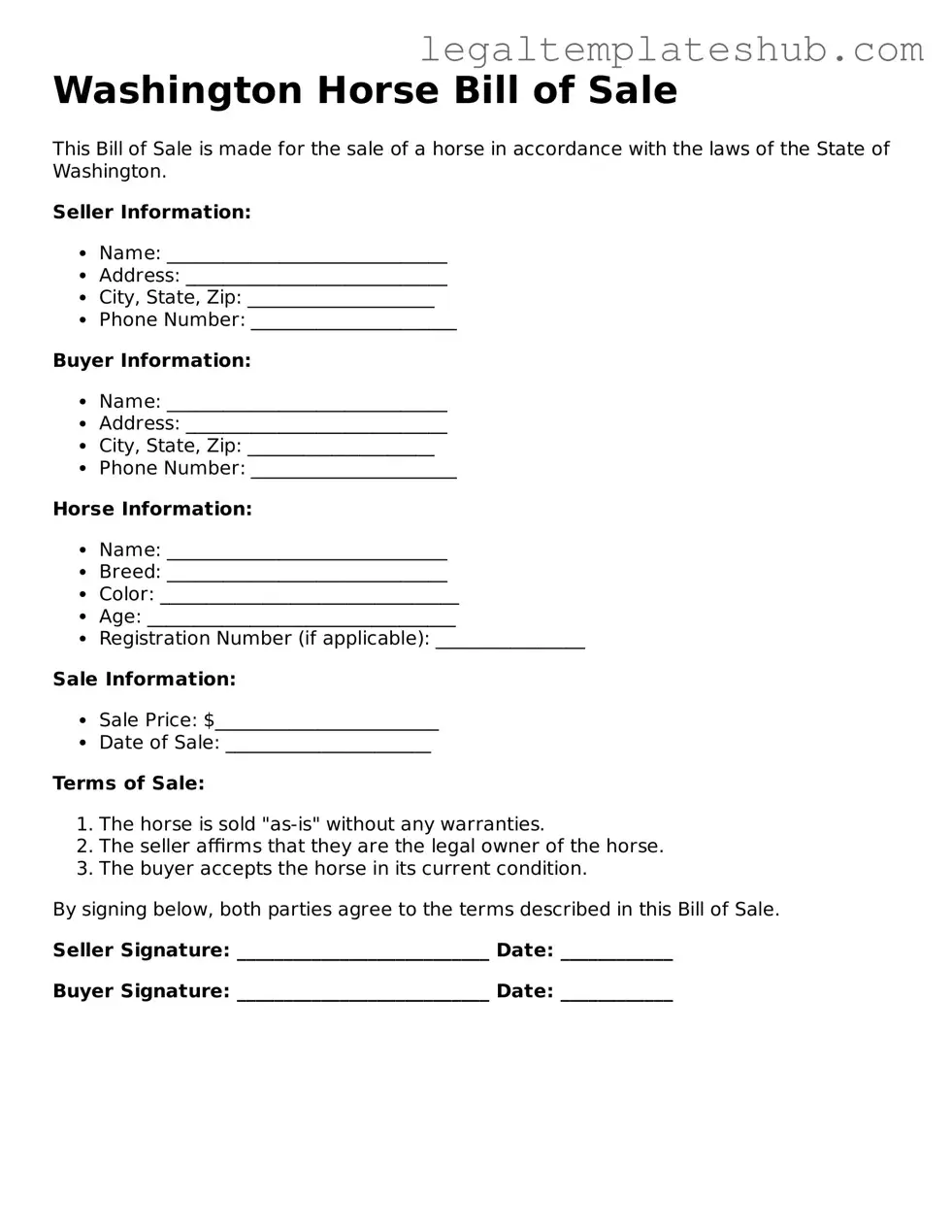Printable Horse Bill of Sale Document for Washington
The Washington Horse Bill of Sale form is a legal document used to transfer ownership of a horse from one party to another. This form serves as proof of the transaction, detailing important information about the horse and the parties involved. Understanding this form is essential for both buyers and sellers to ensure a smooth and lawful transfer of ownership.
To get started, fill out the form by clicking the button below.
Access Editor
